Use the leaves and seeds of plantain plant for food and healing.
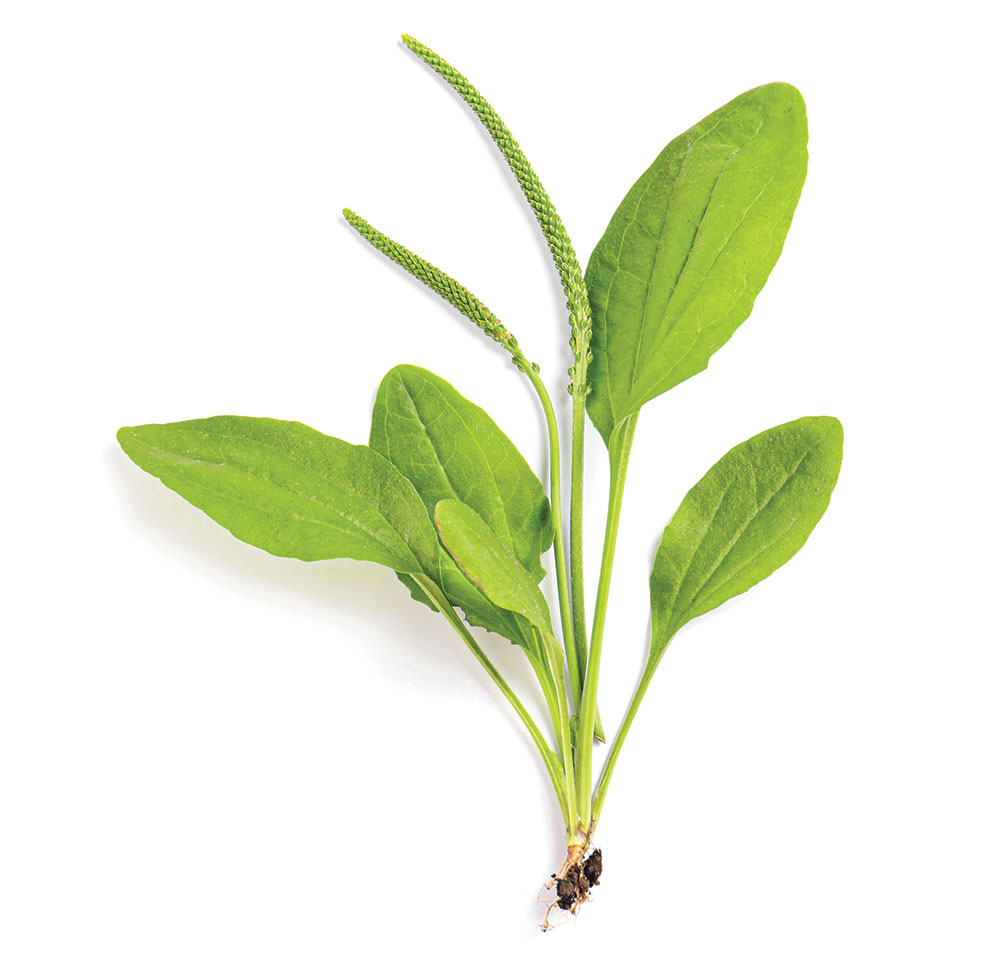
NAME: PLANTAIN (Plantago)
Plantain family (Plantaginaceae)
Common names: English plantain, white man’s foot, ribwort
DESCRIPTION
The entire plantain plant can grow to about 1 foot across, with the seed stalks rising from 1½ to 2 feet tall. Typically, the plants hide in lawns, much like dandelion. There are two most common species of plantain: narrowleaf plantain and English plantain. The leaves all radiate from the base in a rosette fashion, with the basal leaves reaching from 6 inches to 1 foot.
Narrowleaf plantain (P. lanceolata) leaves are linear, 4 or 5 inches long and prominently ribbed with parallel veins that converge at their bases into a broad petiole at least 1 inch long.
English plantain (P. major) has large, glabrous leaves up to 6 inches long and roundish or ovate shaped.
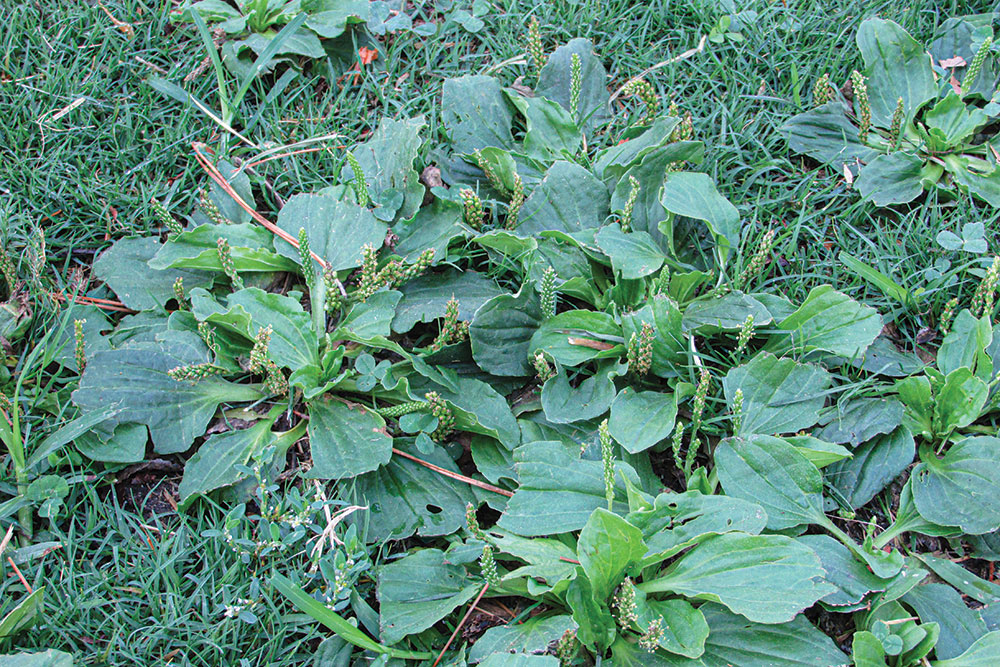
The flower spikes of each are very similar. The 1/8- to ¼-inch flowers are arranged in dense spikes on simple, leafless stalks that grow up to about 1 foot tall, sometimes taller. Each greenish flower is composed of four sepals, a small corolla and four stamens (sometimes two).
The flowers are covered by dry, scarious bracts. Each flower matures into a two-celled seed capsule, and the flowers are formed in spikes. Each spike is about 1 to 2 inches long. The spikes arise on stalks that can be up to 2 feet tall but are typically about 9 inches tall. These erect flower spikes have been compared to cattail spikes and thus are sometimes called “mini-cattail spikes.”
WHERE FOUND
This European native grows best in rich soil but can be found in diverse environments—growing along streams, where it grows large and lush, and in hard-packed soil, in which it will tend to stay small. Plantain is very common all over the United States in agricultural lands, along walkways, in gardens, lawns and waste places.
USES OF ENGLISH PLANTAIN
The tough fibers of the older plantain leaves make them difficult to digest. The young, tender leaves of spring are the best to eat; use them in salads or as you would spinach. The leaves that have become more fibrous with age need longer cooking, and they’re best chopped finely or pureed and cooked in a cream sauce. Young, tender leaves can be used as a grape leaf would be used in “dolmas” (stuffed grape leaves); that is, they can be filled with rice, rolled and cooked.
The seeds can be eaten once they’re cleaned by winnowing. The easiest way to use the seeds is to toss them whole into bread and pancake batter or add them to soups.
The seeds can also be ground into flour and used as you would regular flour. They can be soaked in water until soft and then cooked like rice. Once cooked, the seeds are slightly mucilaginous and bland. They can be eaten plain or flavored with honey, butter or other seasonings.
PROCESSING
You can tear out the tough fibers of the older plantain leaves. Otherwise, simply dice the leaves. Seeds are collected and hand-winnowed.
WHEN TO HARVEST/AVAILABILITY
New leaves are produced each spring, so that’s the time to harvest the leaves. The flower stalk arises in early summer, and the seeds mature in mid- to late summer, when they’re readily harvested.
MEDICINE/NUTRITION
One hundred grams of plantain seed contain 339 milligrams of potassium and 305 milligrams of phosphorus.
One hundred grams of the leaf (about ½ cup) contain 184 milligrams of calcium, 52 milligrams of phosphorous, 277 milligrams of potassium and 2,520 micrograms of beta carotene.
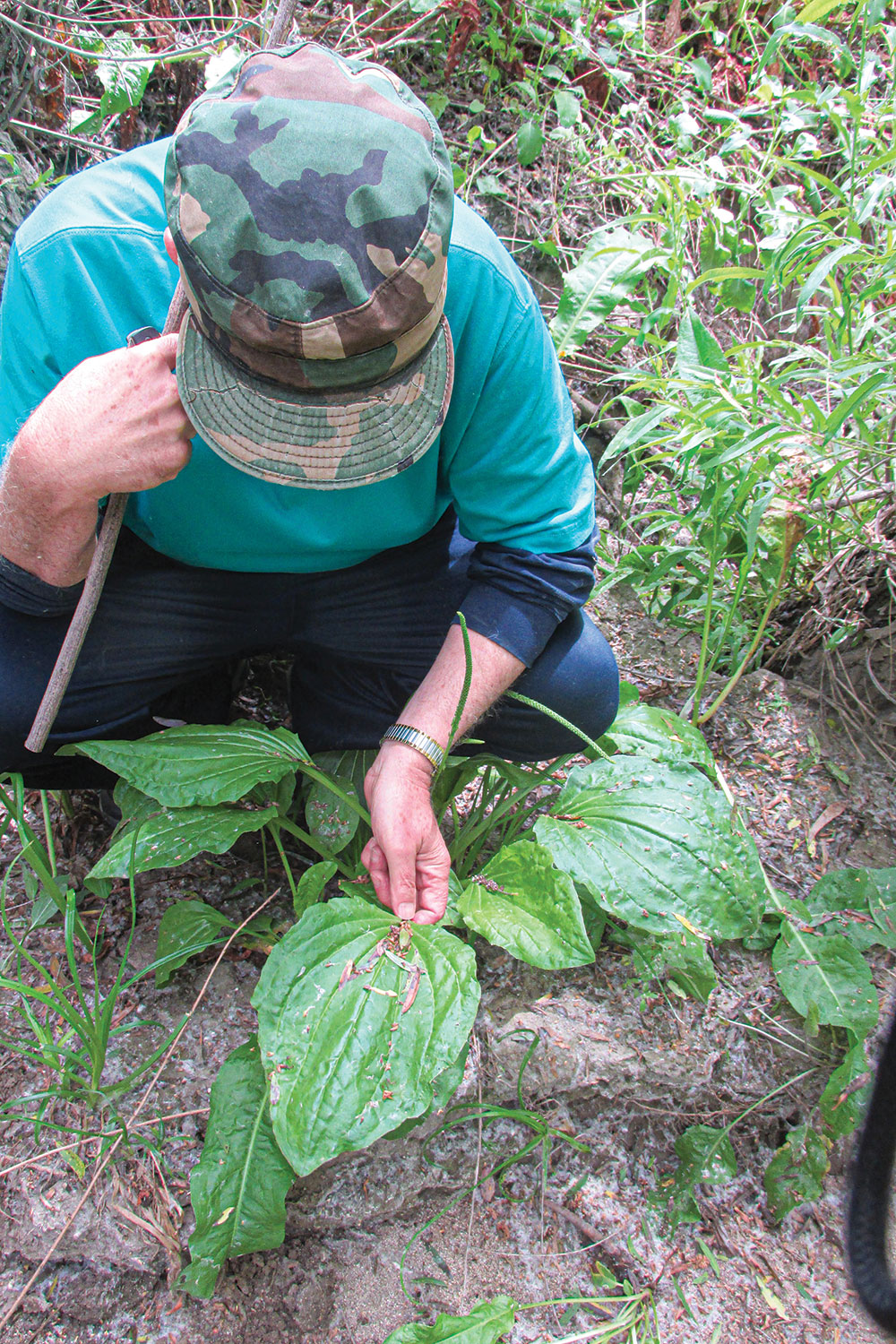
Plantain leaves have a mild laxative effect and are said to have a healing effect on ulcers. Plantain and poppy heads can be mixed together and applied on wounds to kill pain. Plantain is a “vulnerary” (that is, it promotes healing) and is noted for its styptic, antiseptic and astringent qualities. Shoshoni people used the cooked leaves as a poultice for wounds.
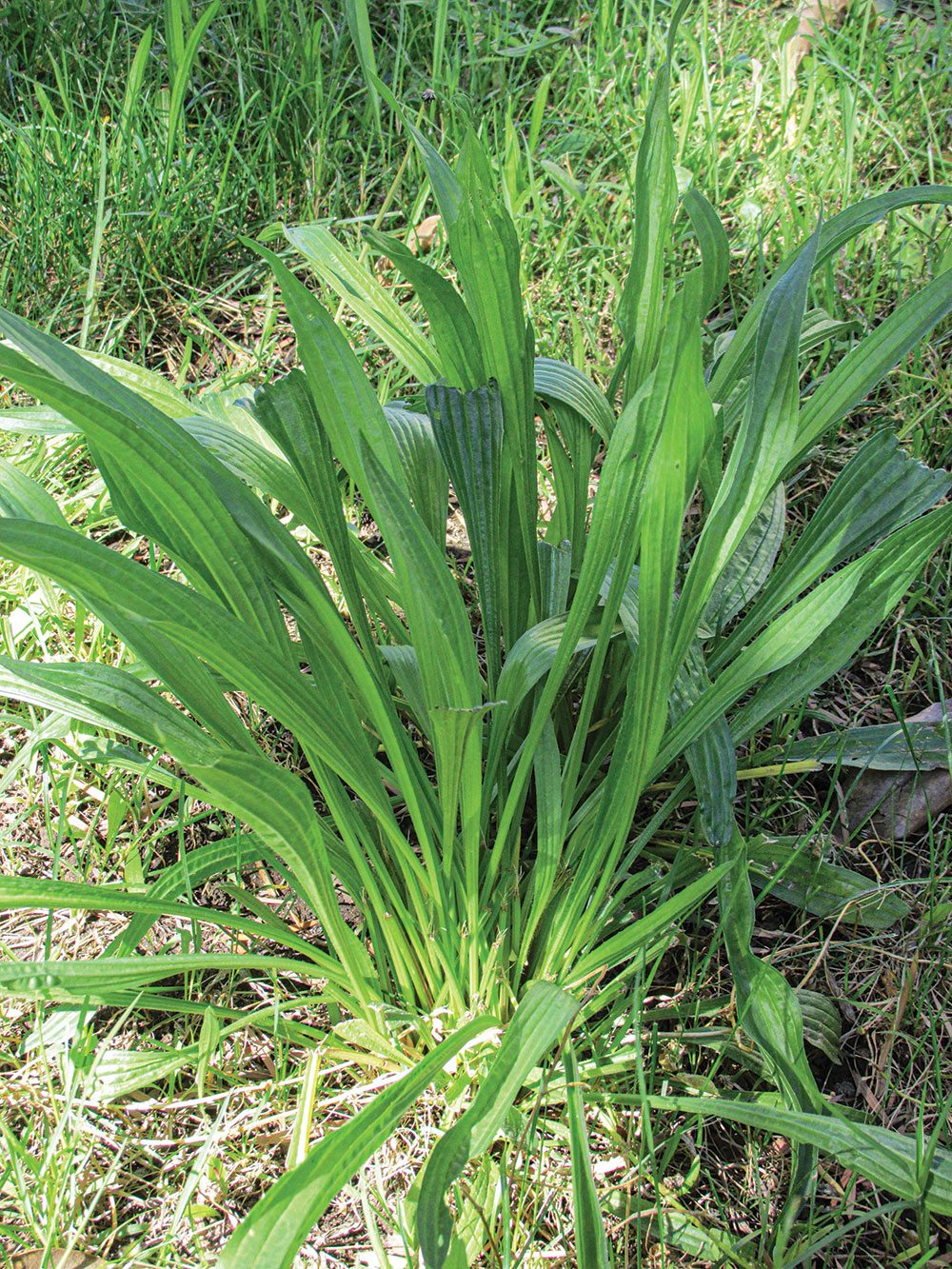
Patricia Earl of Laurel Canyon, California, told me that her family has long used the plantain leaves for healing. Her great-grandmother, who was from Germany, moved into the Minnesota area and learned about plantain from the local Native Americans in the years just after the Civil War. Since then, the family has used plantain leaves numerous times … with miraculous results.
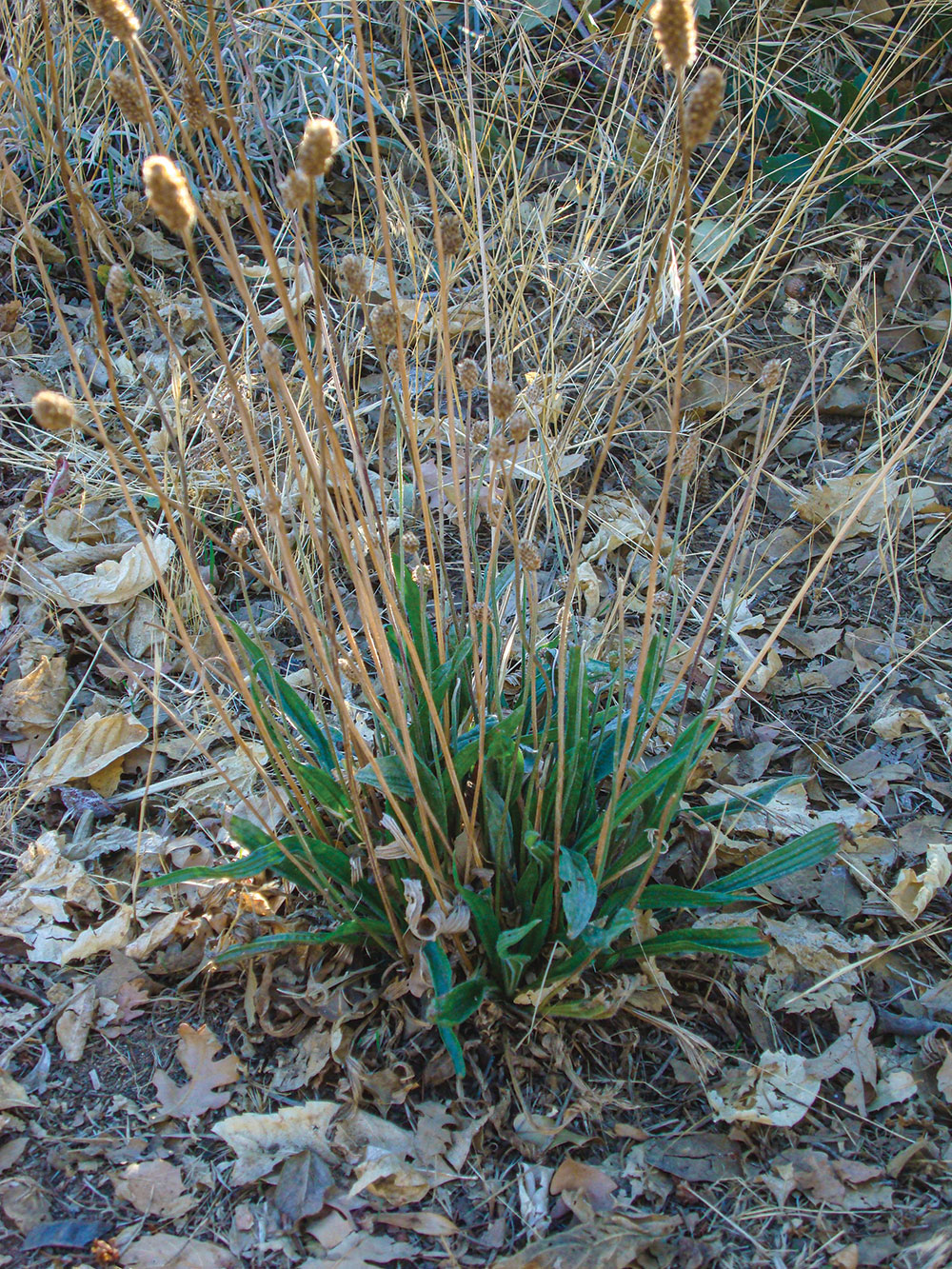
For example, an uncle had a circulatory problem that resulted in skin sores. To heal the sores, he placed crushed plantain leaves directly on the wounds, and they healed. In other instances, family members have applied a poultice of the crushed, fresh leaves directly on puncture wounds, resulting in reduction of swelling, reduction of pain and no infection.
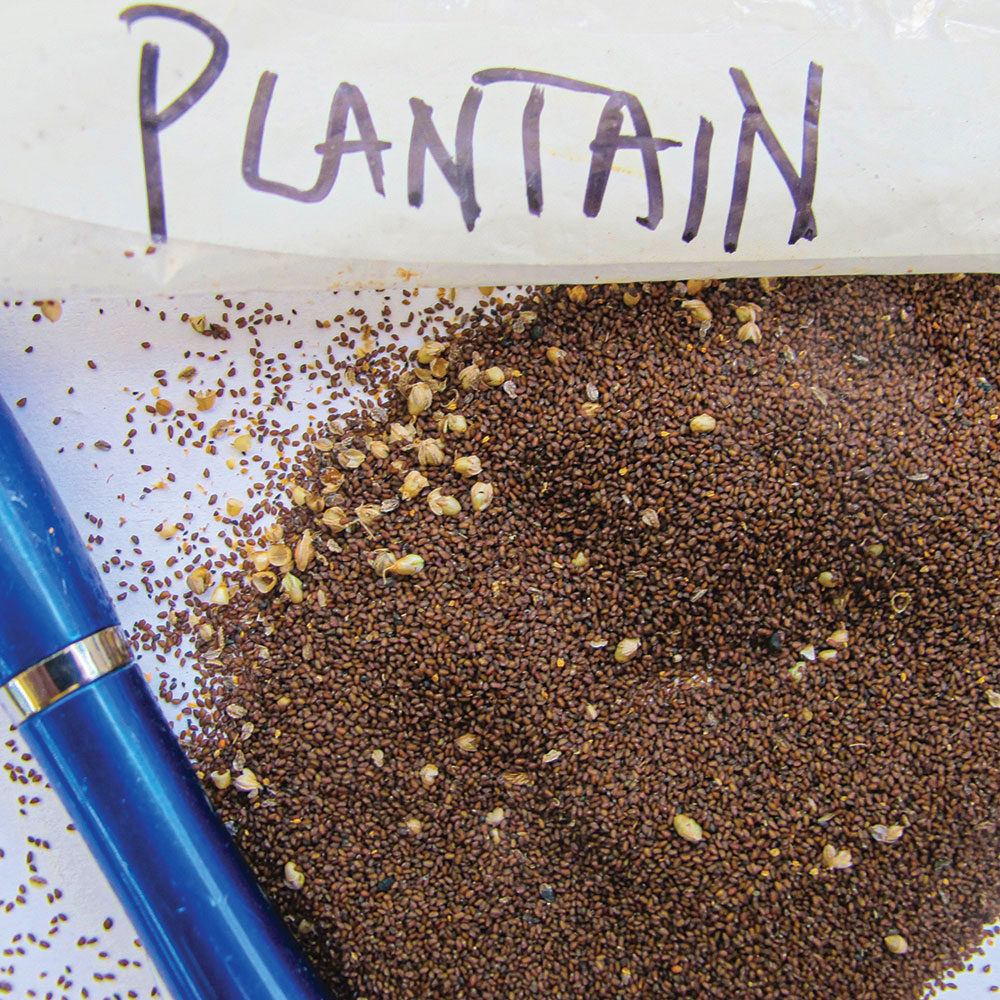
Psyllium (Plantago ovata) is a close relative to the plantain. The seeds and husks are commonly sold in some markets, used as a laxative or as a means to cleanse the colon.
ADVICE FOR GROWING
This is such a common plant that you probably don’t need to grow it. However, if you’re sure you don’t have it in your area, you can purchase seeds online. Scatter them; they sprout easily.
CAUTIONS
Because plantain is so common on lawns and golf courses, clean the leaves thoroughly before eating them, and ascertain that no harmful chemicals have been added to the lawn.
RECIPES
Plantain Roll
This recipe is a variation on stuffed grape leaves. Simply substitute plantain leaves for grape leaves.
Plantain Leaves Stuffing:
- 1 pound ground beef
- 2 cups rice
- 1 garlic clove, diced
- 1 egg, beaten
- Spices, your choice, to taste
First boil or steam the plantain leaves until they’re tender. You might need to pull out the fibers on older leaves.
Cook the ground beef in a pan until it’s lightly browned. Drain the grease. Cook the rice until tender and then add it to the pan of ground beef. Add the garlic and egg and let everything cook until it’s tender.
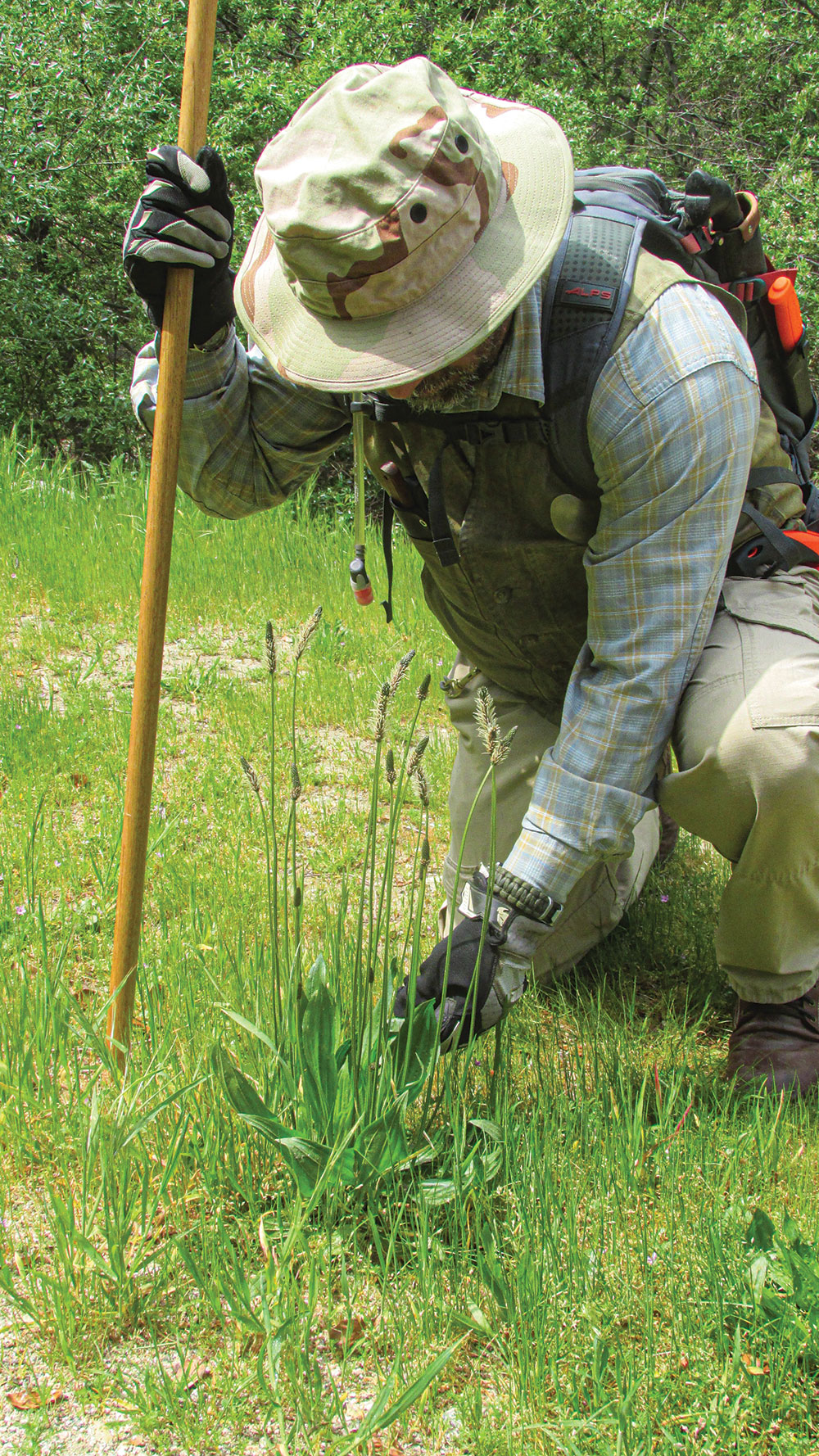
Place a heaping tablespoon of the filling onto each plantain leaf and fold the leaf around the filling, tucking the seams underneath. Each roll will look like a fat cigar. Place the rolls in a baking dish and let them bake at about 350 degrees (F) for about 15 minutes—just long enough for them to warm up.
This recipe makes about 20 rolls.
A version of this article first appeared in the January 2022 issue of American Outdoor Guide Boundless.

